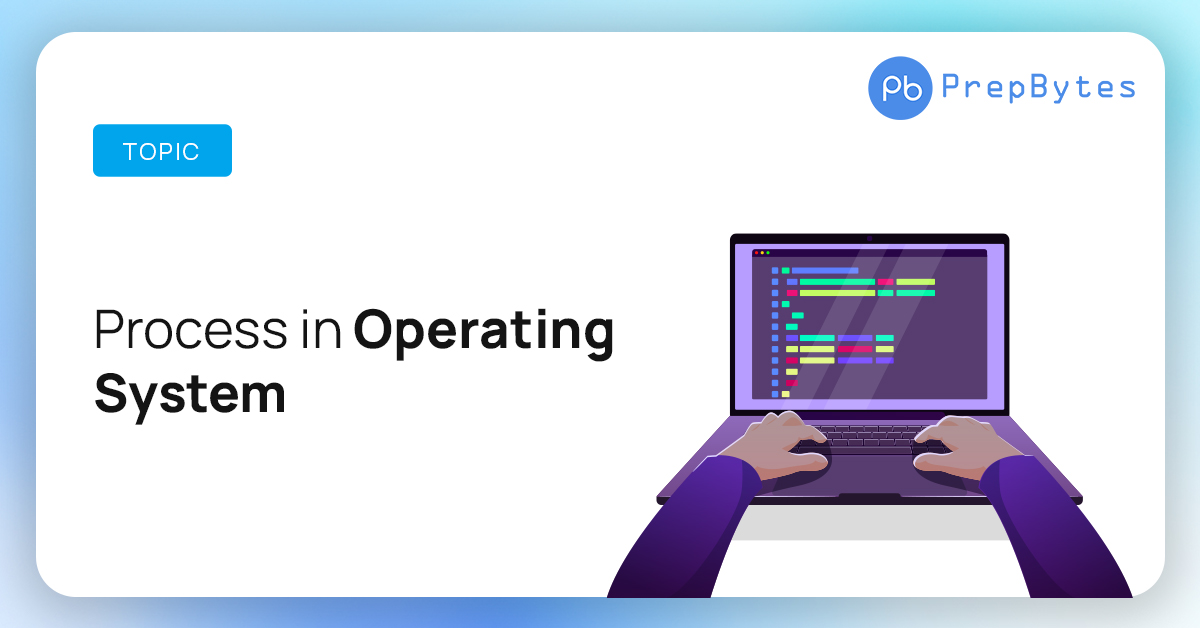Operating systems introduced processes to enable multitasking, allocate system resources efficiently, provide inter-process communication, and facilitate coordination among programs for efficient and effective execution.
Process in Operating System
A process consists of the program code, associated data, and the execution context. The operating system manages and schedules the execution of processes on the CPU. Processes can communicate and synchronize with each other using inter-process communication mechanisms provided by the operating system. The concept of processes allows for multitasking and parallel processing in modern operating systems.
Lifecycle Process in an Operating System
The lifecycle process in operating system includes:
- New: This is the initial state of a process, where the operating system creates the necessary data structures to manage the process.
- Ready: The process is waiting to be assigned to a processor for execution.
- Running: The process is currently being executed on a processor.
- Waiting: The process is unable to continue its execution and is waiting for an event or resource to become available.
- Terminated: The process has finished its execution, and its resources are being released by the operating system.
Components of Process in the Operating System
The components of the process in operating system include:
- Heap: In this region of memory dynamic memory allocation happens. The heap is managed by the memory manager of the operating system.
- Stack: This is a region of memory where local variables and function calls are stored. As procedures are called and returned, the stack expands and contracts.
- Data: This segment contains the global and static variables of the program.
- Text: This is where the executable code of the program is stored.
Process Control Block(PCB)
The way that each operation is carried out is supervised and controlled by the operating system using a data structure known as an operation Control Block (PCB). Here is the explanation of each operation in the process control block:
- Process ID: A unique identifier assigned to each process by the operating system.
- State: It indicates the current state of the process, such as running, ready, blocked, terminated, or suspended.
- Pointer: It points to the next or previous PCB in a queue or linked list of PCBs.
- Priority: A numerical value assigned to each process that determines its relative importance and determines the order in which processes are executed.
- Program counter: A register that stores the memory address of the following instruction that the CPU will process.
- CPU registers: A set of registers that hold data and instructions being processed by the CPU.
- I/O information: The information about the process’s use of virtual memory and operating system resources.
- Accounting information: The data that maintains track of the way a process is using its resources, such as CPU time, memory use, and I/O operations.
Advantages of Process in Operating System
Here are the advantages of process in operating system:
- It has efficient for resource allocation.
- They have enhanced system stability and security through process isolation.
- It is independent process execution for fault tolerance.
- These have inter-process communication for collaboration.
- It is easy to debug individual processes.
Disadvantages of Process in Operating System
Here are the disadvantages of process in operating system:
- They have limited system resources can cause performance issues.
- It has synchronization issues can arise when processes access shared resources.
- The process of switching can consume time.
- It has increased memory usage due to process duplication.
- These have security risks from malicious processes accessing sensitive data.
Conclusion
In conclusion, a process in operating system is a program in execution, managed by the operating system, and has its own resources, state, and data, which play a crucial role in multitasking, resource allocation, and inter-process communication.
Frequently Asked Questions(FAQs)
Q1. How is a process created in an operating system?
Ans: A process can be created in an operating system in several ways, such as when a user initiates a program, a program spawns a child process, or the operating system itself creates a process for system tasks.
Q2. What are the states of a process in an operating system?
Ans: A process in an operating system can be in one of several states, such as new, ready, running, blocked, or terminated. The state of a process can change depending on various events, such as waiting for input/output operations, waiting for resources, or being preempted by the operating system.
Q3. How does the operating system manage process communication?
Ans: The operating system provides several mechanisms for processes to communicate with each other, such as interprocess communication (IPC), shared memory, and message passing. These mechanisms allow processes to share data and coordinate their activities in a cooperative manner.
Q4. What is a process control block (PCB)?
Ans: The operating system uses a data structure called a process control block (PCB) to manage and regulate processes. It contains information about the process, such as its current state, CPU registers, memory usage, and resource requirements.
Q5. How does the operating system handle process termination?
Ans: When a process terminates, the operating system frees up its resources and updates its internal data structures. This may involve releasing memory, closing open files, and notifying other processes that were interacting with the terminated process.
Q6. What is process migration in an operating system?
Ans: Process migration is the transfer of a running process from one machine or node to another in a distributed computing environment. This can be done to balance the load across multiple machines, improve fault tolerance, or reduce response time for user requests.
Q7. What is process tracing in an operating system?
Ans: Process tracing is the recording of events related to the execution of a process, such as a system calls, signals, and memory usage. This information can be used for debugging, performance analysis, or security auditing purposes.






